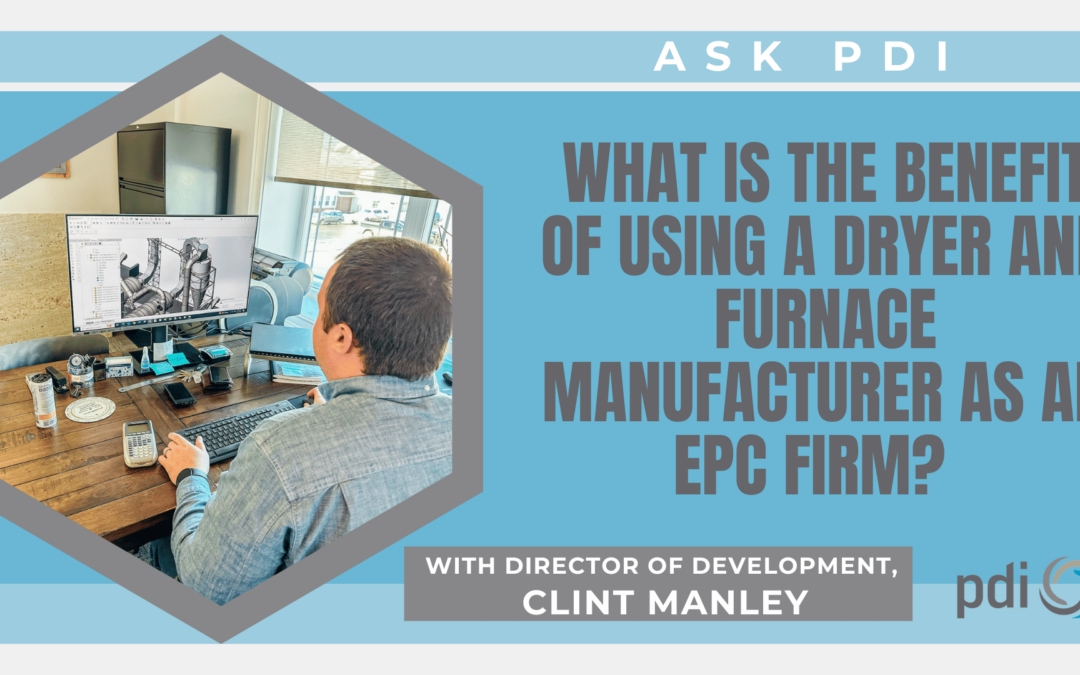What is the benefit of using a dryer and furnace manufacturer as an EPC (engineering, procurement, and construction) firm? What tools does PDI have that make projects successful?
“There are many tools that make projects successful, but I will focus on three that drive most of my decision making on projects. They are risk management, communication, and experience. I won’t go into too much depth with experience, but one of my favorite sayings is, ‘You’re learning something, you just don’t know it yet,’ really hits on how experience is our greatest teacher. You can’t get it from a textbook or even talking to the most seasoned veteran, you just have to put in the time.
Communication is another easy one, but you would be amazed at how many people don’t communicate the right information. It’s an art form to understand what is the key information to communicate, and to filter out the ‘noise.’ By focusing on what truly matters, project efficiency is exponentially increased.
Lastly, risk management is a key skill that drives project success whether that’s in the aspect of safety, cost, schedule, or quality. To succeed in all areas, you have to know your project risks inside and out and drive the project to mitigate those risks. One of the biggest risks of any EPC project is integration, does all the different parts, pieces, and equipment fit together correctly and function together as a facility. A great way to mitigate that risk is to “carve out” a large chunk of the project scope (typically the most complicated system) that one manufacturer or supplier can self-perform. That’s where in many projects it would be wise to contract with PDI that can supply the most complicated system, the dryer, turn-key while also serving as the EPC.
By doing so, the client not only de-risks the project by eliminating interfaces for the most complicated system in the facility, but they also provide one point of accountability for the management of the entire project. This simplifies the client’s project management requirements and puts the ownership where it belongs—on the EPC contractor. Let the builders do what they do best and engineer and build while the owners do their best by operating and maintaining facilities.”
